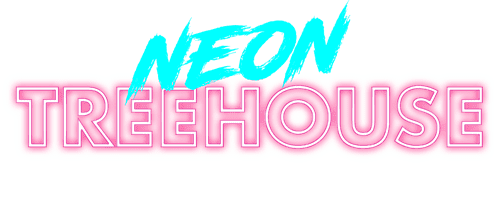Everything tells a story. Our job as marketers is to find one suits the audience. The art of storytelling is essential to any sales pieces. Stories draw the attention of the public, and Ray Edwards reminds us that the power of narrative in sales is no different.
Ray Edwards is a communications strategist and copywriter who knows a thing or two about the power of words. Edwards has generated an estimated $100 million in sales from his marketing campaigns. For his knowledge and success, he was welcomed to this year’s Social Media Marketing World event. SMMW is an annual mega-conference that aims to inspire and empower over 3000 marketers in the world of social media. Social Media Examiner hosts the event.
Edwards opens his workshop with a short video of a blind homeless man on the street. He begs for change, but few people give. That is until a woman takes hold of his sign and changes his situation. I won’t ruin the ending, but the video captures the significance of words and its ability to compel. He easily captured the attention of the audience, and his workshop shared how we can do the same for our viewers.
The Headlines
Across Edwards’ workshop, he covered some great headlines which can help any marketer revitalise their copy: The “How To”, “Top 10 Reasons”, “How to Eliminate”, “Best-for”, and “Doctor’s Secret”.
- The “How To” Headline
A classic headline used by marketers because it is informative and it works. However, Ray does mention that it has a minimal sales offer. Examples of these headlines are common but range from “How to Start a Small Group” to “How to Clean Your House in 30 Minutes”.
- The “Top 10 Reasons” Headline
This style of headline usually works better in non-business markets, Edwards advises. These headlines help marketers and the audience by just stating the facts, without pitching.
- The “How to Eliminate” Headline
These types of headlines assist users with a problem they may be having.
- The “Best-for” Headline
Edwards says these headlines are, again, all about helping the customer. You supply a number of answers for their problems and grab their attention if it’s what they want to hear.
- The “Doctor’s Secret” Headline
Another classic headline to entice the audience that goes along with “The Mechanic’s Secret to a 500 000 Mile Car”.
The common thread in these headline styles is in their ability to know a problem and address it. Ray Edwards emphasizes that we need to really know the daily fears, anxieties, and stresses of the public and address them. Are these headlines clickbait? Yes, but only so you can assist and be relevant to the title.
Now, write without being sleazy!
Now for that old “without being sleazy” remark. For the matter of writing copy without being “sleazy”, Edwards gives us gives “Crucial Keys to Copy.”
- Connect
If it feels vague, or like something you would pass through on your feed, then it is probably not worth it. Ray says that you must know your tribe. It’s not about creating a conversation, but being part of the conversation that your readers are wanting to have right now.
- Connect Through Copy
As marketers, you should be useful, empathetic, etc, but you should also be incomplete. Ray tells us that you should not be telling your readers everything. It’s about telling them snippers, or as he states, “Solve a problem for people before you try to sell them something.” This concept is nothing new, but many have difficulty grasping it.
- Construct Copy Using a Framework
Ray Edwards also brings up the idea of the PASTOR framework. It is important to think of the people in your audience. As yourself, to whom are you talking? Then, everything you do should be in the effort to solve a problem for those people. The PASTOR framework works like this:
P – Problem: Identify something in your audience’s lives which might be a problem
A – Amplify: Extrapolate on the problem. Think about why it is so bad and why it needs a solution.
S – Story: Coming back to stories, Ray reminds us to tell stories about someone or something with the same problem. The power of stories comes in their ability to bring people together and help them understand. They are the most powerful methods of selling and communicating
T – Testimonial: Ask yourself, what have you eventually sorted out to fix this problem?
O – Offer: In this phase, what you are selling is not the product; it is the emotion and solution to the problem.
R – Response: The call to action
- Captivate
Ray then tells a story of a character who has a problem and meets a guide. This guide gives the character a plan and calls them to action. The action results in comedy or tragedy. As marketers, we are not the character, the guide, or the villain, but to tell a story is to create interest. Stories relax and relate people. By telling stories, you are able to read people and empathise, something all businesses should do.
This was a great session covering many things that I think a lot of people know, but basically don’t fully understand how this can be used for their business, or have had this as a “I’ll start working on getting my copy better next week” sort of scenario. Overall, it’s actually not that difficult to work through this storytelling model of writing, you just need to put your mind to. I love that so many different storytelling based sessions have been on during this social media marketing conference, as it’s an important part to ensuring that social media doesn’t just become this void for nothing content.










